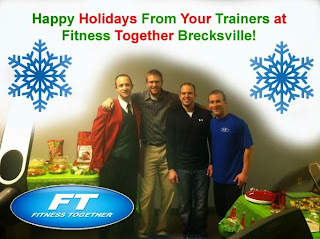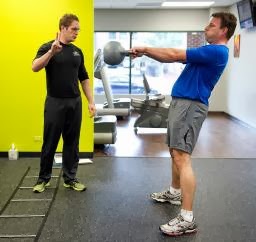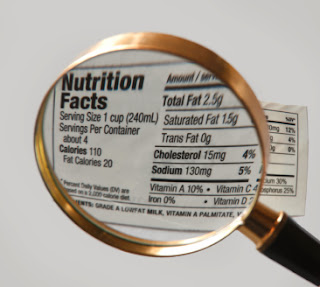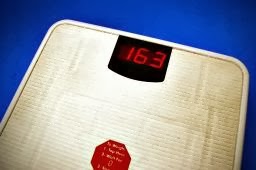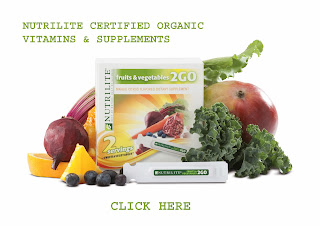Reasonable Resolutions: Setting Yourself Up for Success in 2014
Now that the last gift boxes have been put away and the holiday decorations are starting to come down, the countdown to the New Year and a new set of resolutions is well under way.Before you get sucked into the stress of setting New Year’s resolutions and deciding what type of bandwagon you want to jump on to lead a healthier and fit lifestyle, it’s important first and foremost to establish some solid groundwork to ensure you’re setting reasonable resolutions for yourself that can be realistically achieved.
“Seven out of ten resolutions don’t work because come January 1 people think they can just turn on a light switch,” shares Frank Rosalie, personal trainer and owner at Fitness Together Williamsburg and Virginia Beach. “Right now, your light switch is off and it can be months -- and most of the time years -- that you’ve spent ingraining bad habits into your life like not exercising, eating unhealthy or being stressed out. As a human being, you can’t just change your emotions and habits from being off to on overnight.”
To switch up the odds that may be stacked against you in succeeding with your resolutions this year, make sure to include the following criteria into your planning so that you can successfully transform your 2014 goals, ambitions and resolutions into a new lifestyle for the long term.
Take Small Steps to Accomplish Big Results
Contrary to some New Year tactics, resolutions shouldn’t be an all-or-nothing approach. The foundation to building successful resolutions that last for the long term relies on making incremental realistic changes to your lifestyle on an ongoing basis. For instance, instead of saying that you’re going to start working out and restricting all unhealthy food items all at once, Rosalie suggests that a more successful approach is to pick one goal to focus on for the first couple of weeks and then add the second goal only after you get a good handle on managing the first one.
It's also important to accept that you're going to hit bumps along the way to accomplishing your resolutions. Rosalie advises that the best way to stay on course is to not worry about the past -– it’s already gone. Or stress out about the future –- it’s not here yet. Only think about today and focus on what steps you can take now to get closer to achieving your goals.
“Within six to seven weeks, up to 70 percent of people who make resolutions drop off,” warns Rosalie. “People are putting too much on their plate. It stresses them out and when they hit an obstacle like not working out for a few days or having a bad day eating healthy, they just give up. You have to give yourself enough time to work it out and figure out how to break your bad habits. If you do it in small increments, it’s less stressful and more manageable. In time, small steps will equal big steps.”
Give Yourself the Green Light to Enjoy Life
Resolutions can have negative connotations associated with them and they can automatically put you into a negative mindset when the first of the year arrives if they aren’t approached appropriately. Turn the negativity associated with making resolutions -– taking away the food you enjoy, doing exercises you don’t like -– into a more positive experience by adapting your resolutions to fit what you enjoy and what makes you happy.
For example, if want to start exercising next week pick out something that you like to do first. Whether you enjoy bicycling, swimming, walking, doing aerobics classes or playing sports, focus first on becoming consistent with one of your favorite activities. Eventually, after you’ve gotten into a more active routine, you can then branch out to try different workouts or activities when you’re ready for a new challenge or adventure.
The same concept holds true with changing up your diet as well. Rather than starting to eat healthy "cold turkey" and forcing yourself to eat foods that don’t taste good to you, gradually wean yourself off your guilty indulgences -– whether it’s sodas, sweets or salty treats -– until you eventually substitute all of your cravings with healthier alternatives that agree with your nutrition goals and your taste buds.
“Be aware of how you eat and make healthier choices throughout the day,” advises Rosalie. “But don’t get stressed out if you fall off the wagon. Once you start exercising and cleaning out your body, the cravings you had eventually will go away.”
Surround Yourself with a Strong Support System
When you set out to make changes to who you are and the life you live, you have to surround yourself with a strong support group who will accept the changes you want to make for yourself and encourage you to do whatever it takes to successfully meet your goals.
Your personal support can be anyone -– a family member, friend, mentor or even a personal trainer. You just need to have someone who supports what you’re doing and is available for you to turn to when you need advice or guidance.
“If you hang out with the wrong group of people, those resolutions will go right down the drain,” says Rosalie.
Celebrate Your Successful Results
Although living a healthy and fit lifestyle takes continuous effort and dedication, it should take only about four weeks or so of doing all of your workouts and eating right before you start realizing the results of sticking to your resolutions. The results, though, won’t necessarily be ones that you can see on the outside, but rather ones that make you feel better inside about the accomplishments you have achieved and the person you are becoming.
“I always tell my clients that you’re going to start feeling better on the inside before you starting seeing differences on the outside,” Rosalie advises. “You will become proud of yourself and begin to feel confident in your abilities. You also will start to believe that what you’re doing is really worth it.”
Whether it’s internal or external results that you accomplish first from your resolutions, it’s important to celebrate all of your successes to keep you on course and motivated to continually strive to achieve your ultimate goals for the year. The key to successfully accomplishing any type of resolution is to keep your expectations realistic and to set up a path to achieving your goals that fits with your specific personality and interests.
© 2013 Fitness Together,
Inc. All Rights Reserved. Powered by Fusionbox.
About | Contact | Franchise | Suppliers | History | Leadership | Nutrition Together |Sitemap | Privacy Policy | Terms of Use | Facebook | YouTube | Twitter | Linkedin


